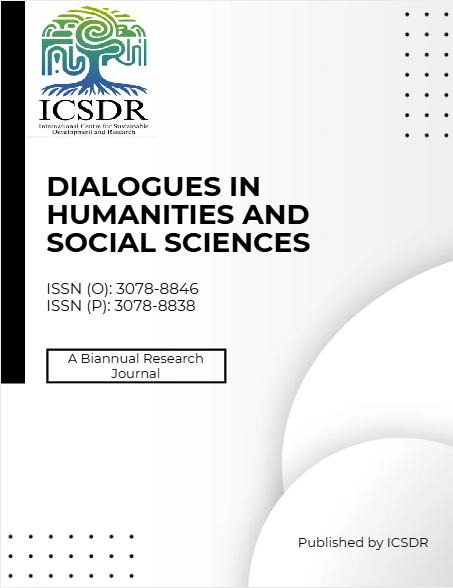Singapore-US Relations 2004-2024:From the Perspective of International Relations Theories
DOI:
https://doi.org/10.71261/dhss/3.1.2938Keywords:
Singapore, United States, international relations theories, small states, major powers, competitionAbstract
Throughout the period from 2004 to 2024, Singapore's foreign policy towards the United States has been characterized by pragmatism and adaptability. As a small but economically significant state, Singapore has effectively leveraged its strategic location in Southeast Asia to build strong ties with the U.S., securing economic and security cooperation while navigating the challenges posed by the rise of China and the rebalancing of global power structures. The study also delves into Singapore's participation in key regional and global institutions, such as ASEAN and the United Nations, where it balances its support for U.S. interests with an emphasis on regional stability and multilateralism. Singapore has maintained an unwavering commitment to free trade, demonstrating a liberal economic outlook that aligns with American values, especially in the context of their close partnership in areas like defense, trade, technology, and investment. Constructivist theory also provides valuable insight into the shaping of their bilateral relationship, as both countries share an identity as global middle powers advocating for rules-based international order, human rights, and sustainable development. As global power dynamics continue to evolve, Singapore remains an important player in U.S. foreign policy strategies, positioning itself as a bridge between East and West in an increasingly multipolar world.
Downloads
Published
How to Cite
Issue
Section
License
Copyright (c) 2024 Dialogues in Humanities and Social Sciences

This work is licensed under a Creative Commons Attribution-NonCommercial 4.0 International License.
DHSS is licensed under a Creative Commons Attribution-NonCommercial 4.0 International license (CC BY-NC 4.0). This license permits users to use, reproduce, disseminate, or display the article provided that the authors are the original creators and that the reuse is restricted to non-commercial purposes, i.e., is attributed to research or educational use, provided that the work is properly cited.

